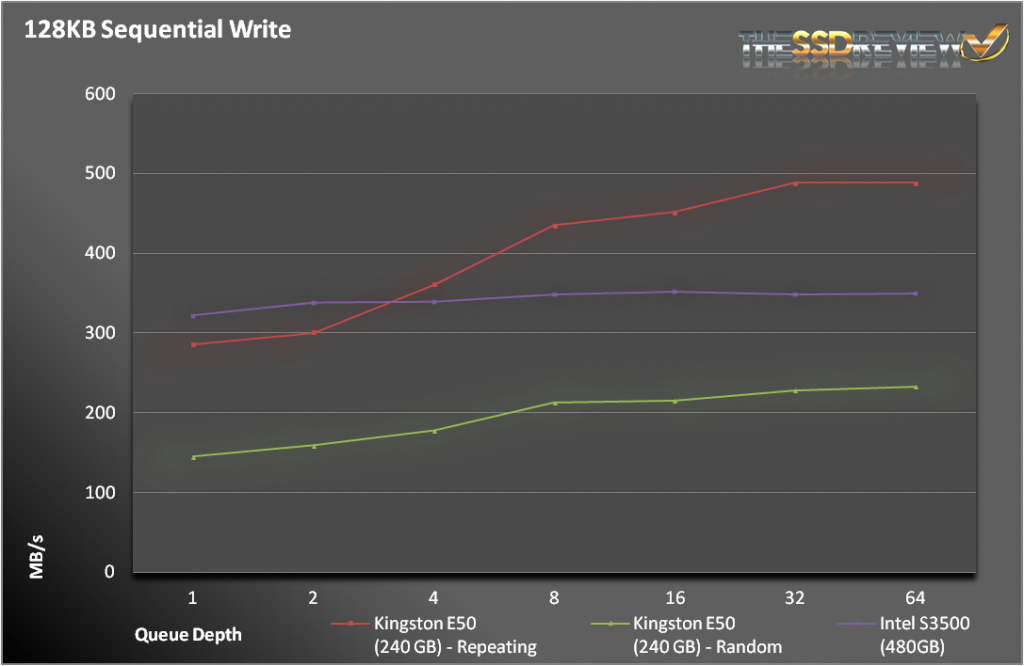MEASURING PERFORMANCE
As with all of our tests, the following tests were performed after a secure erase of the drive. The drive was also conditioned with a predefined workload until it reached steady state. We also test across the entire span of the drive.
As with our other tests, the E50 was able to get close to its specification with repeating data, but fell short with random data. The good news is that if you have compressible data, the E50 sneaks out a win with read operations and blows past the competition with writes.
Different test, same story. With repeating data, the E50 leaves the Intel S3500 in the dust. With over 57K write IOPS, the E50 is capable of giving out of this world results, given the right circumstances. Of course, it is also capable of 2K write IOPS when data gets random. What’s really disappointing is that the E50 was only able to put up 45K read IOPS, where other drives in this class routinely get 70-90K.
SNIA IOPS TESTING
The Storage Networking Industry Association has an entire industry accepted performance test specification for solid state storage devices. Some of the tests are complicated to perform, but they allow us to look at some important performance metrics in a standard, objective way.
SNIA’s Performance Test Specification (PTS) includes IOPS testing, but it is much more comprehensive than just running 4KB writes with IOMeter. SNIA testing is more like a marathon than a sprint. In total, there are 25 rounds of tests, each lasting 56 minutes. Each round consists of 8 different block sizes (512 bytes through 1MB) and 7 different access patterns (100% reads to 100% writes). After 25 rounds are finished (just a bit longer than 23 hours), we record the average performance of 4 rounds after we enter steady state.
- Preconditioning: 3x capacity fill with 128K sequential writes
- Each round is composed of .5K, 4K, 8K, 16K, 32K, 64K, 128K, and 1MB accesses
- Each access size is run at 100%, 95%, 65%, 50%, 35%, 5%, and 0% Read/Write Mixes, each for one minute.
- The test is composed of 25 rounds (one round takes 56 minutes, 25 rounds = 1,400 minutes)
Our SNIA testing just reinforces our previous results. With repeating data (bottom), the E50 performs great on write operations, but trails in read performance. With random data (top), the E50 trails, and in most cases, it’s not close.
What is nice to see is the relatively flat performance when transitioning from writes to reads for repeating data. Normally we see more of a dip as the ratio approaches 50%.
 The SSD Review The Worlds Dedicated SSD Education and Review Resource |
The SSD Review The Worlds Dedicated SSD Education and Review Resource | 


But what will the internal components be 6 months from now?
Hi, i did’nt understood the difference between the both SNIA’s test. The description of both is the same but the results are different. Thanks for attention.